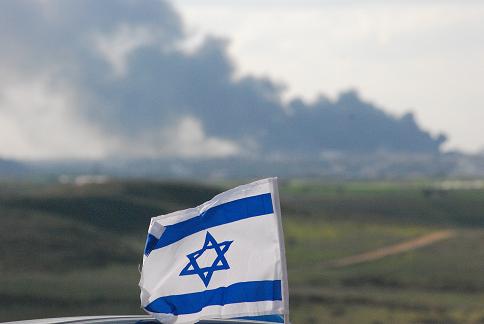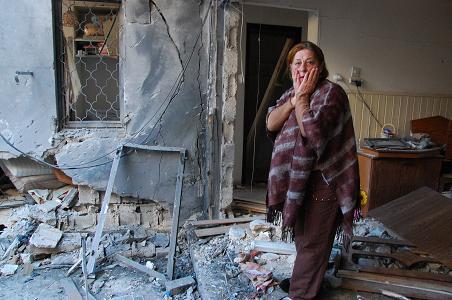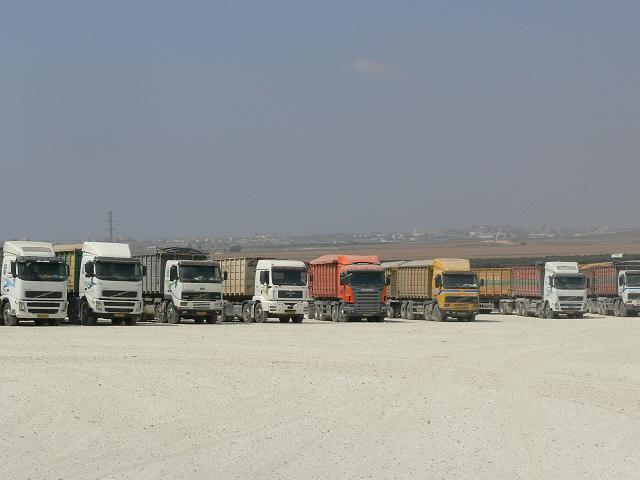Over a Year Since Operation Cast Lead: A Summary of Statistics
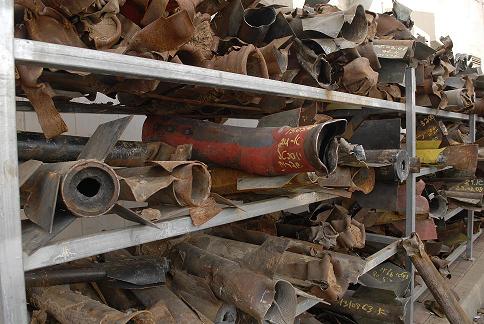
*12,000 rockets and mortars have been fired from the Gaza Strip since 2001.
* In the year of 2008, over 3, 200 Palestinian rockets were fired from the Gaza Strip, the largest number of rockets fired at Israel (per year) since 2001.
* Since Israel’s disengagement from the Gaza Strip in August 2005, rocket fire dramatically increased with over 7,000 rockets having been fired at Israel (www.mfa.gov.il ).
Hamas-Israel Ceasefires
Israel has held two previous ceasefires with Hamas:
* November 11, 2006 — May 15, 2007: Over 315 Palestinian rockets struck Israel during the six-month ceasefire.
* June 19 — December 19, 2008: Over 538 Qassam and mortar rockets slammed into Israel during the six-month ceasefire. Most of the rocket fire took place during the months of November and December.
* Since January 18, the end of Operation Cast Lead, over 310 rockets, missiles, and mortars have been fired at Israeli citizens.
Operation Cast Lead (December 27, 2008–January 17, 2009)
* Over 796 Hamas rockets and mortars were fired into Israel from the Gaza Strip during the three-week Operation Cast Lead. The war revealed that Hamas’s rocket range now targets over 1 million southern Israelis living in major cities that include Ashkelon, Be’er Sheva, Ashdod, Gedera, and Kiryat Malachi.
* Since Israel’s defensive operation began in December 27, over 294 Israelis were injured in Palestinian rocket and mortar attacks and over 244 Israelis have been treated for shock.
* Palestinian rockets struck nine educational facilities including high schools, kindergartens, and elementary schools. Three synagogues in the western Negev were hit by rockets.
*84 Hamas rockets exploded in Sderot during the operation.
*140 Tzeva Adom siren alerts blared in Sderot within the three weeks of fighting. (Yehuda Maman, Sderot Security Officer: Security Briefing: February 4, 2009)
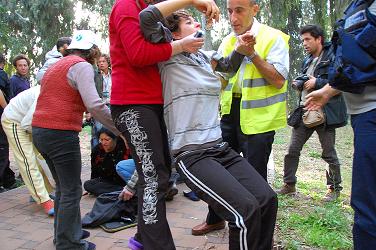
Causalities: Over 1,000 people in Israel have been wounded by Palestinian rockets and mortars fired from the Gaza Strip since 2001, including Israelis, Palestinians and foreign workers.
Psychological Impact: Over 5,500 patient files have been opened in the Sderot Mental Health Center in light of continuous rocket fire. In the year 2007 alone, 1,117 trauma victim files were opened. Anxiety symptoms among children often include sleeping difficulties, nightmares, sweating, development regressions, wetting beds, and fear of the outside.
According to a 2008 NATAL study (Center for Victims of Terror and War), between 70% to 94% of Sderot children suffer from symptoms of PTSD while 28% of children are diagnosed with PTSD. About 30% of Sderot adults are also diagnosed with PTSD. http://www.haaretz.com/hasen/spages/945489.html
Economic Impact: According to Yakov Levy, a Sderot realtor, prices of homes have dropped down 50 percent. Housing prices were nearly double in 2000 before the Palestinian rocket fire began. Around 20-30 % of businesses in Sderot and surrounding areas have shut down since the rocket terror. Sales at stores in general have dropped by nearly 50 percent.
During the intense rocket fire of May 2007, 350 small businesses were forced to shut down. Since 2001, Gaza rocket fire has forced 11 Sderot factories to shut down.
During Operation Cast Lead, Hamas rocket fire caused millions of shekels in losses in the area of construction work across the Negev and the south. Numerous small businesses suffered in decreased sales and have been unable to pay employee salaries because of low revenues.
*Source: Mynet News, 15.1.09: http://www.mynet.co.il/articles/0,7340,L-3656145,00.html
Home and Property Damage: Close to 1,900 cases have been filed to the Israeli government for damages done to homes and property by Hamas rocket attacks during the three weeks of war. Palestinian rockets directly hit more than 1,500 Israeli homes and buildings in the south, and caused heavy damage to 327 vehicles.
*Source: Walla News, 21.1.09: http://news.walla.co.il/?w=/1/1421716&bigmaavaron=1
Israel’s Humanitarian Aid to Gaza
Since Operation Cast Lead, 22,893 truckloads of 703,224 tons of humanitarian aid have been delivered through Israeli crossings into Gaza including basic food commodities, medication, medical supplies, blood units and donations by various governments and blood units.
703,224 tons of aid transported in Gaza at the request of international organizations, the PA and governments since Operation Cast lead. Over 105,600,128 liters of fuel transferred through Israel’s Nahal Oz fuel terminal and Kerem Shalom goods crossings, both of which have been targeted by Palestinian mortar fire in the past. The World Food Program informed Israel that it would cease shipment of food to Gaza because warehouses were at full capacity.
The IDF made over 165,000 telephone calls to Gaza residents warning them of rocket strikes and distributed 2.5 million leaflets instructing Gaza civilians to stay away from terrorists and weapons storage sites. Israel also evacuated 38 Palestinians for medical treatment including two children.
*Sources: Haaretz, Jan. 18 2009, Israel MFA Website, IICC, Reuters January 17, 2009, The Israel Project, www.theisraelproject.com. http://www.terrorism-info.org.il/malam_multimedia/English/eng_n/pdf/ipc_e044.pdf

The LA Times on January 19, 2009 published an article stating that after Israel withdrew from Gaza in 2005, dozens of Hamas militants with engineering and chemical knowledge went to Tehran for training, according to Israeli officials. Experts of Iran’s elite Revolutionary Guard taught the Palestinians to build lethal rockets by cobbling together materials and chemicals found in Gaza or smuggled in from Egypt, according to Israeli experts.
The article further stated that Iran has provided Hamas with hundreds of smuggled artillery rockets that reach as far as 25 miles into Israel. In recent communications with Hamas leaders, Iranian officials assured the Palestinians that they could expend their rockets — estimated to number 2,000 at the start of combat in December– because Iran would replenish the arsenal, an Israeli security official said.
Over 5,000 of centrifuges are operating in Iran today, which enrich uranium, the material used to produce a nuclear weapon. The UN Security Council has passed four resolutions since 2006 to try to stop Iran from enriching uranium.
*Sources: LA Times, January 19, 2009: http://www.latimes.com/news/nationworld/world/la-fg-gaza-assess18-2009jan18,0,4212860.story
http://un.org/News/Press/docs/2008/sc9268.doc.htm
http://www.google.com/hostednews/ap/article/ALeqM5jG7bnyWWJfgaYD-JwcqmimipRujwD94MND800
http://www.terrorism-info.org.il/malam_multimedia/English/eng_n/pdf/ipc_e044.pdf









